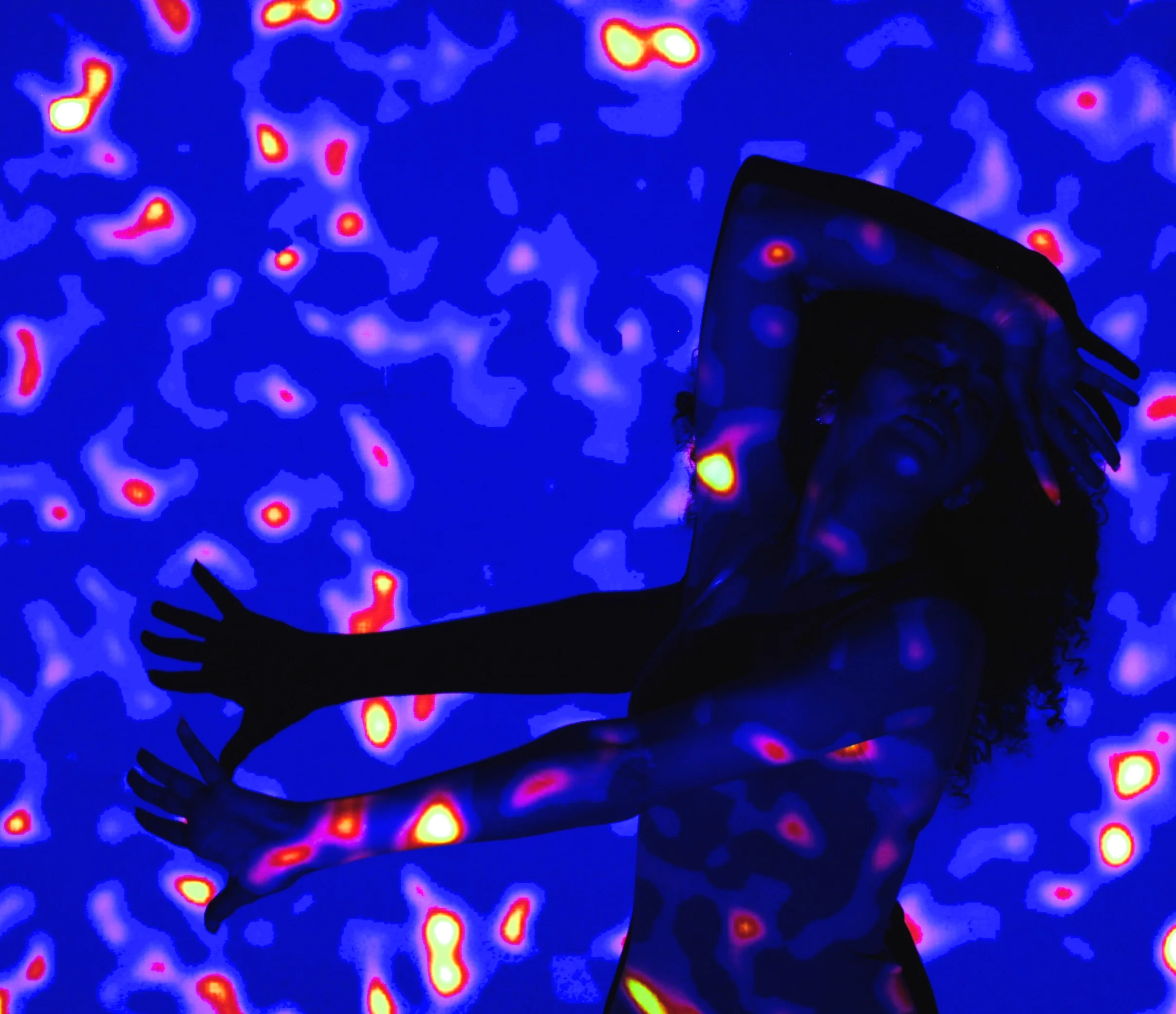Nature's Magnifying Glass:
Gravitational Lensing
Gravitational Lensing by Galaxy in Cluster IRC 0218
“…He whipped a tape measure and a large round magnifying glass from his pocket… I was irresistibly reminded of a pure-blooded well trained foxhound as it dashes backwards and forwards through the covert, whining in its eagerness, until it comes across the lost scent….”
Kim-Vy Tran of Texas A&M University in College Station is that well trained foxhound searching for the lost scents of cosmic bodies of yesteryears with her own sophisticated tape measure and magnifying glass. While measuring and observing with her man-made instruments, Tran and her team caught sight of something unexpected, a cosmic magnifying lens.
When most of us think of a magnifying lens, we think of someone like Sherlock Holmes searching for clues or perhaps a mean kid playing God and burning ants. We think of the man-made lens. Rarely do we think the universe could be holding a lens for us to look through and observe a distant galaxy, but that is just what Tran found- a gravitational lens.
“It’s very difficult to see an alignment between two galaxies in the early universe. Imagine holding a magnifying glass close to you and then moving it much farther away. When you look through a magnifying glass held at arm’s length, the chances that you will see an enlarged object are high. But if you move the magnifying glass across the room, your chances of seeing the magnifying glass nearly perfectly aligned with another object beyond it diminishes,” says Tran in reference to the rarity of the discovery.
The Hubble team describes these exceptional occurrences as “’lensing’ galaxies [which] are so massive that their gravity bends, magnifies, and distorts light from objects behind them, a phenomenon called gravitational lensing.” This particular cosmic lens that has just been discovered is about 9.6 billion years old, that is 9.4 billion years older than the previous record holding lens, which was a mere 200 million years old. Nature is giving us a magnified glimpse into the past.
Gravitational Lensing by Galaxy in Cluster IRC 0218
How can a galaxy be a magnifying lens?
A typical magnifying glass works by bending light (i.e. refraction) to a focus point, in this case your eye. In a similar way, gravitational lensing also works by bending light, but in this case it is mass from another galaxy bending the light. This galaxy that extends far into space causes light rays passing near and through its gravitational field to bend and again refocus onto a particular location. The more massive and dense the matter, the more bending and refracting. For the physicist, gravitational lensing is a beautiful demonstration of Einstein’s theory of general relativity.
But Nature’s freebie of gravitational lensing offers another intriguing insight. Some of the dense mass of a galaxy is baryonic matter (i.e. ‘regular matter’ that makes up planets, stars, etc.), but a large portion of this mass is ‘dark matter’. Dark matter is a type of matter that remains invisible, elusive, and does not react to light the way baryonic matter does. Unlike optical lensing (i.e. magnifying glass), light bending due to gravitational lensing is independent of wavelength and dependent only on the strength of the gravitational field it passes through. In other words, all light rays are bent the same amount by gravity and do not diffract (i.e. rainbow splitting of light). Thus, the bend being observed from dark matter is due to its mass.
Dark Matter
Why is this important?
Dark matter cannot be directly observed with our usual methods and man-made telescopes. For the astronomers like Kenneth Wong and Sherry Suyu of the Academia Sinica Institute of Astronomy and Astrophysics who work with Kim-Vy Tran at the Texas A&M University, Nature’s magnifying glass enables them to study the composition of space. Emma Grocutt of the University of Edinburgh explains it like this: “because [gravitational lensing] is directly sensitive to amounts and distributions of dark matter. […] Gravitational lensing is a clean probe of the Universe and has much to tell us about its two most mysterious components – dark matter and dark energy.”
Adding the knowledge from this new serendipitously discovered ancestral gravitational lens to the already known younger lenses allows astronomers to study the development and composition of the universe through time with the help of Nature’s lenses. We build instruments like the Hubble telescope but at times forget we are actually modeling off of the methods and instruments of the universe. Human ingenuity is amazing as we have seen with the Hubble’s capabilities, but every now and then, the universe allows us to use one of its own lovely instruments to peak into its mysterious nature.
IRC 0218 Lensing Feature
IRC 0218 Lensing Feature Without Foreground Cluster
Though these are the words of Sherlock Holmes, if the universe could speak it too may whisper,
“You know my methods. Apply them.”
References:
Kenneth C. Wong, Kim-Vy H. Tran, Sherry H. Suyu, Ivelina G. Momcheva, Gabriel B. Brammer, Mark Brodwin, Anthony H. Gonzalez, Aleksi Halkola, Glenn G. Kacprzak, Anton M. Koekemoer, Casey J. Papovich, & Gregory H. Rudnick (2014). Discovery of a Strong Lensing Galaxy Embedded in a Cluster at z = 1.62 The Astrophysical Journal Letters vol. 789 arXiv: 1405.3661v2
Hubble Press Release:
Hubble Shows Farthest Lensing Galaxy Yields Clues to Early Universe
The Canada France Hawaii Lensing Survey (CFHTLensS):
“What is Gravitational Lensing?” by Emma Grocutt, The University of Edinburgh
Images:
STScl, Gravitational Lensing by Galaxy in Cluster IRC 0218: NASA, ESA, K.-V. Tran (Texas A&M University), and K. Wong (Academia Sinica Institute of Astronomy & Astrophysics)
Dark Matter: Van Waerbeke, Heymans, and CFHTLens collaboration
The Sherlock Holmes and Dr. Watson quotes are from:
A Study in Scarlet (1887) and The Sign of the Four (1890) by Sir Arthur Conan Doyle

